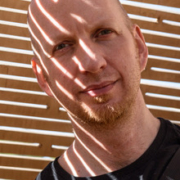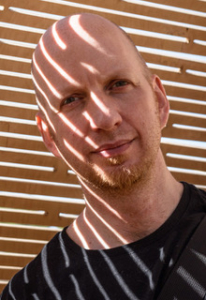
Who
I am a copywriter, content writer, and brand writer, and also a visual artist. I’ve written for most media, and for clients of all types and sizes, including Rolex, BMW, and Harman International. My favourite client at the moment is a local coffee shop, where they make the best espresso in the galaxy. This impresses me even more than global corporate conquest! Lately, I’ve been courting other small and mid-sized companies, including non-profits, seeking clients whose missions I especially connect with. I’ve learned that shared passions help me do my best work.

Where
This is one of the benefits of living and working in Brooklyn. Whatever you’re excited about, here it is. You’ll never run out of inspiration from brilliant, talented, driven, creative weirdos. It’s one of the most diverse populations anywhere, both in demographics and ideas.
You may hear complaints that Brooklyn’s a victim of its success—that it’s less a living city than an international brand; a pop-culture codeword for cool. There’s some truth to this. The hype has brought the expected soaring rents, long lines, high ticket prices, chain stores, and now an exodus of half the people who made the place cool in the first place. I think they’ve moved to Berlin.
Where would I go? I have a bit of a crush on Montreal. I love its blend of North American / European and big city / small town. I find it charming how when locals find out you’re American, they need to be calmly convinced that you’re not armed and insane—after which they’re incredibly friendly. But for now, I’m sticking with Brooklyn, because I have so many connections here, and I still love the energy. I’m willing to adapt to increased competition and neuroses.
Needless to say, looking for work now means more than just turning on your phone’s ringer. I’ve had to hustle more, have found ways to evolve as a writer. I’ve been moving toward longer-form content, brand writing (including verbal identity and style guides), and consulting on online conversation strategy. I enjoy working in these forms, which allow you to establish a strong voice for a brand. Online conversations—forums and comment threads—are especially interesting to me. More than ads, they can build trust, inform a client’s customers, and invite them into a community. I believe this is at the core of marketing’s future. Industry people love to talk about “engagement,” but if the word is to have value, it needs to mean more than getting someone to click a Like button.
When, How
My personal copywriting story predates Like buttons and viral ferret videos. It started around fifty years before I was born, when my Grandfather, Samson Raphaelson, worked as a copywriter to support his fiction writing habit. He went on to write plays and movies, eventually winning the Screenwriters’ Guild’s Laurel Award for lifetime achievement. Over these years his wife wrote two well-received novels. At the dawn of the Madmen era, his son, my father, who had trained in journalism, took a copywriting job at Ogilvy & Mather. He grew enamoured with the work, and likewise with the wit and long red hair of the copywriter whose office he shared. Not long after, he married her. That’s when I came into the picture.
I suffered countless thousands of dinner table conversations about clients and brands and language and how kids these days don’t know how to write. At the age of six, something inspired me to borrow my mom’s typewriter and churn out piles of completely incoherent novels—I couldn’t spell or punctuate to save my life, but the drive to write ran deep. At seven I spent the weekend at David Ogilvy’s chateau in Chauvigny, France, where I discovered that my parents might be involved in something big. But I never suspected they were grooming me for a career. They may not have suspected it either.
During my first grownup years I kept away from advertising. The world recognized me for visual art—urban landscape photography especially—more than for words. Most of my writing was personal, shaped by my English lit degree. My occasional published piece was editorial or literary, in specialty magazines like Alpinist and Bass Player.
To pay the bills I became a freelance graphic designer and print production artist, which left plenty of energy for personal creative work. I chose the graphic side over the verbal side because it offered distance—you don’t have to get as deeply involved with content to make pages look pretty. Ace septic tanks? Dr. Wang’s toenail fungus elixir? Sure, I can make those pages pretty.
Why
There was a catch: lack of deep involvement led to lack of fulfillment. So I thought hard about the intersection of what I did well, what I loved doing, and what the world would pay for. There was only one answer. I transitioned to full-time writing with the help of my freelance agencies and some friendly referrals. I also built a portfolio site, which started attracting headhunters.
Lately I’ve been playing a more active role, looking for companies whose mission I especially admire. And I look for shared interests. These include rock and ice climbing, culinary arts (I ran a Brooklyn underground restaurant, and a blog about food science), trail running, music (I’ve played bass in most of Manhattan’s low-rent dives), literature, climate science, coffee. I’m familiar with each of these worlds, and can navigate their sub-cultures and languages.
When a company piques my interest, I send cold emails or knock on the door. The response rate is low, but I’m learning. In the case of my coffee shop client, I was a customer first, then a friend of the owner. Eventually I said, “look, you need me to rewrite your website.” Like many people in his position, he already knew this, but didn’t know where to begin. Walking him through it has been fun and educational—it’s helping me codify some of the online community-building ideas I’d like to bring to bigger companies. And I can’t get enough of the coffee.
At first, I was afraid my eclectic resumé would make me appear unserious. Now I flaunt it. If a client has use for a content writer who’s visually fluent and who understands ice cream science, who else will they hire? In a global job market, your appeal can really be that specific. You can be picky, and trust that prospective clients will be picky as well. Own your quirks!
What
Here’s a project I’m especially proud of: lead copywriter for Mark Levinson, through Stirred Creative, for six years.
It’s a style guide for a high-end audio company.
It’s unique among my branding projects in that I did it all, from research to strategy to execution. On other projects, including ones I worked on with Futurebrand, I was part of a team consisting of account executives, researchers, strategists, art directors, designers, verbal identity directors, and often other writers. It’s always interesting and educational to take part in such an elaborate process. But any one writer will be responsible for just a small portion of the product. And his or her vision will be heavily mediated by those in charge. With Mark Levinson, I enjoyed taking responsibility for everything. And I loved making use of my personal experience in music and audio.
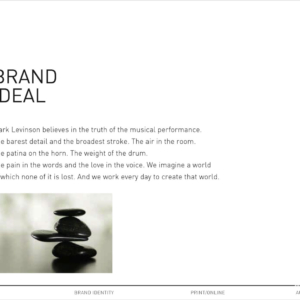
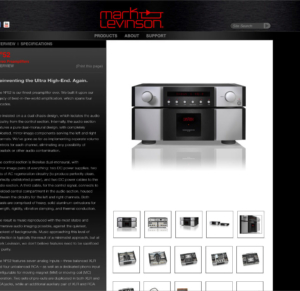
Mark Levinson Samples
What else
Some of my other past and present clients: Ardbeg Whisky, Adient, Atherley Shirts, AKG, BMW, Coffee Mob, El Al, Harman Kardon, Hudson Sutler, Infinity, JBL, LG, MTV Networks, Philips, RCA Records, Rolex, Revel, Soap.com, Tag Heuer, TP Link, Vitivini.
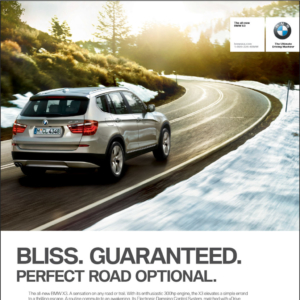

BMW samples
I’ve worked freelance for many agencies, including The Ad Store, Cake Group, Futurebrand, Gotham, KBSP, Siegel & Gale, Starfish, Stirred Creative, Taxi, Wolff Olins.
What now?
I’m ready to take on new clients. Let’s talk.

